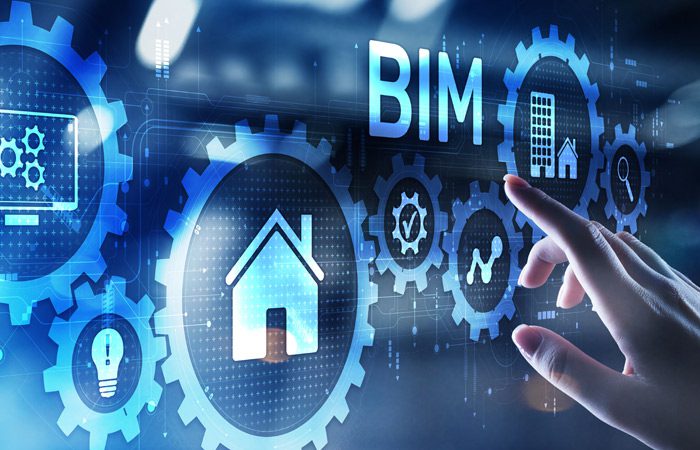
Understanding the Power of 5D BIM: A Paradigm Shift in Construction Excellence
In the dynamic realm of construction, the advent of Building Information Modeling (BIM) has reshaped the industry’s landscape, propelling it towards unprecedented levels of efficiency and precision. As technology advances, so does the sophistication of BIM, giving rise to an evolved concept known as 5D BIM.
In this blog, we explore the intricacies of 5D BIM and unravel the reasons why it stands as a beacon of construction innovation, set to driving the future.
What is 5D BIM?
Before delving into the significance of 5D BIM, it’s crucial to grasp the fundamentals of this transformative approach. BIM, in its traditional form, revolves around the creation of a three-dimensional digital model that represents a building’s physical and functional aspects. 5D BIM takes this a step further by integrating cost-related information, adding the dimension of time, and creating a comprehensive digital representation that encapsulates the entire lifecycle of a construction project.
What are the Dimensions of 5D BIM?
- 3D (Spatial): The fundamental basis of BIM lies in its three-dimensional representation of a building. This visual model encompasses the geometry, structure, and spatial relationships, providing stakeholders with a comprehensive view of the project.
- 4D (Temporal): Introducing the fourth dimension, 4D BIM incorporates time-related information. This dimension enables stakeholders to visualize and understand the project’s progression over time, facilitating better project scheduling and sequencing.
- 5D (Cost): The fifth dimension, and the crux of 5D BIM, involves the integration of cost-related data. This dimension adds a layer of financial intelligence to the digital model, allowing stakeholders to not only visualize the project’s spatial and temporal aspects but also understand its cost implications at every stage.
What is the Importance of 5D BIM?
- Accurate Cost Estimation
One of the paramount advantages of 5D BIM is its ability to provide accurate and real-time cost estimation. By integrating cost data with the digital model, stakeholders can analyze and predict costs at various stages of the project, enabling better financial planning and budget management.
- Enhanced Budget Control
Cost overruns are a persistent concern in the construction industry. 5D BIM empowers project managers and contractors to maintain stringent control over budgets. With a dynamic understanding of costs throughout the project lifecycle, deviations can be identified early, allowing for timely corrective actions.
- Optimized Decision-Making
The incorporation of cost-related data enhances decision-making processes. Project stakeholders can evaluate the financial implications of design changes, construction sequencing alterations, or material substitutions in real-time. This informed decision-making ensures that choices align not only with design and scheduling objectives but also with budget constraints.
- Improved Collaboration
5D BIM promotes a higher level of collaboration among project stakeholders. With cost information embedded in the digital model, architects, engineers, contractors, and clients can collectively assess the financial impact of decisions. This collaborative approach fosters a more transparent and cohesive project environment.
- Risk Mitigation
Construction projects inherently involve uncertainties and risks. 5D BIM aids in risk mitigation by providing a comprehensive understanding of the financial implications of potential issues. Contractors can simulate and analyze various scenarios, identifying and addressing risks before they escalate into costly problems.
- Enhanced Project Lifecycle Management
5D BIM extends its benefits beyond the construction phase, contributing to efficient facility management and maintenance. With a complete digital representation that includes cost information, owners and facility managers can make informed decisions about ongoing maintenance, renovations, and lifecycle upgrades.
- Competitive Edge
In an industry where efficiency and cost-effectiveness are paramount, the adoption of 5D BIM provides a significant competitive edge. Contractors equipped with the ability to deliver accurate cost estimates, maintain budget control, and make informed decisions stand out as leaders in the field.
While 5D BIM presents a paradigm shift in construction management, challenges persist, including the need for standardized processes, increased skill sets, and overcoming resistance to change. However, as technology evolves and industry professionals adapt, these challenges are likely to diminish, paving the way for widespread adoption.
The future prospects of 5D BIM are promising. As artificial intelligence and machine learning technologies continue to advance, the predictive capabilities of 5D BIM are expected to become more sophisticated, further refining cost estimations and decision-making processes.
Thus, 5D BIM represents a monumental leap forward in the evolution of construction management. By seamlessly integrating spatial, temporal, and cost-related dimensions into a unified digital model, this advanced approach provides stakeholders with a holistic understanding of a project’s entire lifecycle. From accurate cost estimation and enhanced budget control to optimized decision-making and collaborative project management, 5D BIM sets the stage for a new era of construction excellence. As the industry continues to embrace this transformative technology, contractors and stakeholders alike will find themselves better equipped to navigate the complexities of construction, ensuring the successful delivery of projects that stand as testaments to efficiency, precision, and financial prudence.

